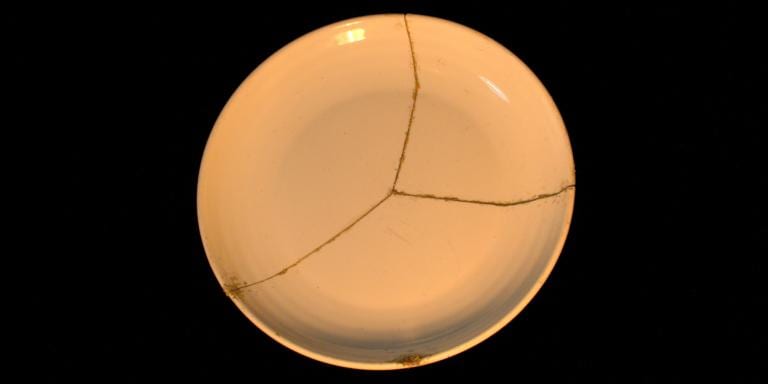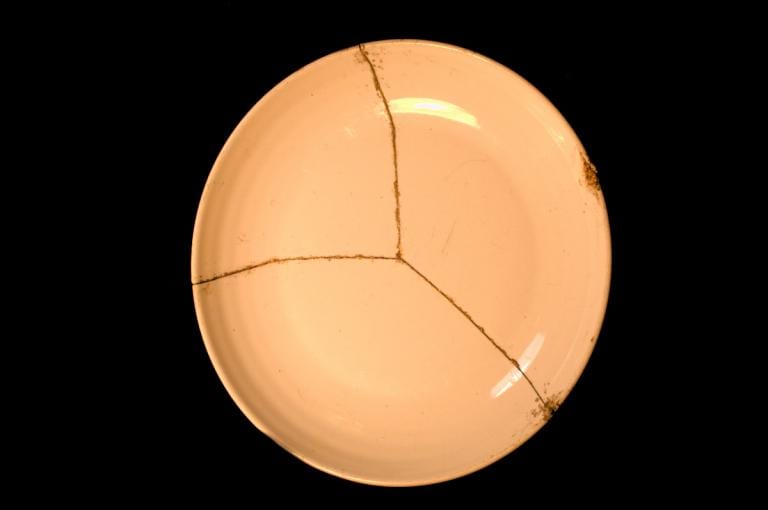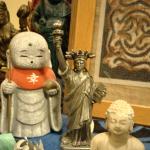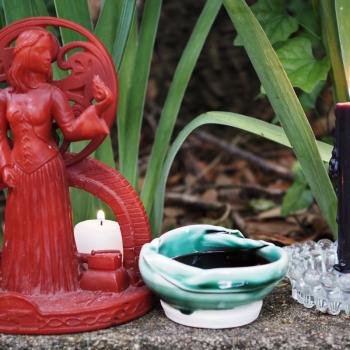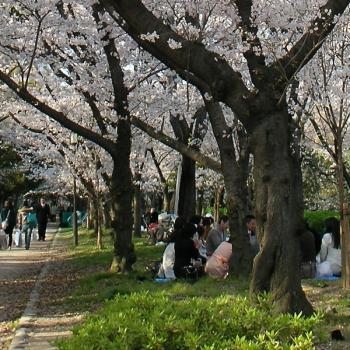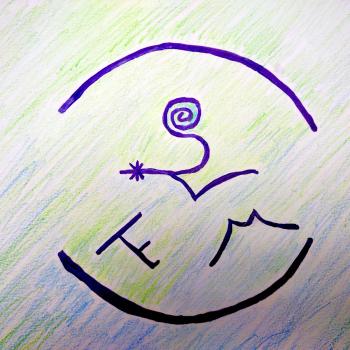For the third entry in our 52 Make-up Challenge, I went with someone more from the craft end of the arts-and-crafts continuum, with an example of modern kintsugi, the Japanese tradition of repairing broken ceramics with gold to call attention to the mended seams.
I took my first shot at this practice two years ago, when during a very low time in my life — a few months after my father’s death — I broke a favorite mug. Gluing it back together with gold in the cracks became a meditation on wabi-sabi, the beauty of the worn and broken.
This old plate was my grandparents — nothing special, just part of the houseware hand-me-downs I received when I moved out of my own. But when I knocked it off the table and it broke so cleanly, it seems a candidate for another experiment in golden joinery.
The traditional form of kintsugi is done with Japanese lacquer, urushi, a hazardous substance — it it the source of the name for urushiol, the chemical that makes poison ivy toxic. Properly cured, a process taking days, it make a fine natural polymer; improperly done, it can cause a serious rash, and has even caused death. I am not a traditionalist, but even if I was that would be enough to suggest looking for alternative methods.
On the other extreme, some crafters just glue the object together and then trace the cracks with gold-colored paint. That seems like cheating.
So my method is a compromise: Elmer’s China and Glass Cement, a modern non-toxic easy-cleanup adhesive; and real gold flake, which I grind down to a more powdery form with my mortar and pestle.
There is no avoiding the breaking, the cracking, the flaws. But it is up to us how we interpret them, whether we see the world as a disappointing fallen version of some perfect Platonic realm, or revel in the realness.


